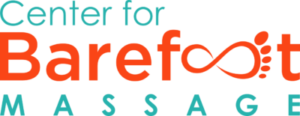To give your client a safe, comfortable and effective barefoot massage, it’s important to support them with specific bolstering for Ashiatsu where needed. We do this in many unique ways, from how we use a flat pillow for ankle and knee support while prone or supine, to what tools we use to position their body to best absorb and distribute gravitational forces and our weight.

Bolster #1: The Boob Pillow.
The purpose of a breast support pillow, when it comes to Ashiatsu, is to position “the girls” while supporting the sternum, clavicle, ribs and cervical spine when under pressure. Keep in mind that the table below the client is resisting your weight, and pushes back into the client’s body.
This “Oreo” of pressure coming from above and below your female client’s torso can translate into suffocating force in the chest, or a position of their head and neck that adds compression to the throat. Having a cushion helps your client maintain thoracic, cervical and shoulder alignment so that she may comfortably absorb the pressure applied by your feet. Keep in mind that the breast recesses built into massage tables don’t always work well with Ashiatsu because the table is still there to push back on the throat – so give the girls some lift, and put an added level of padding underneath!











